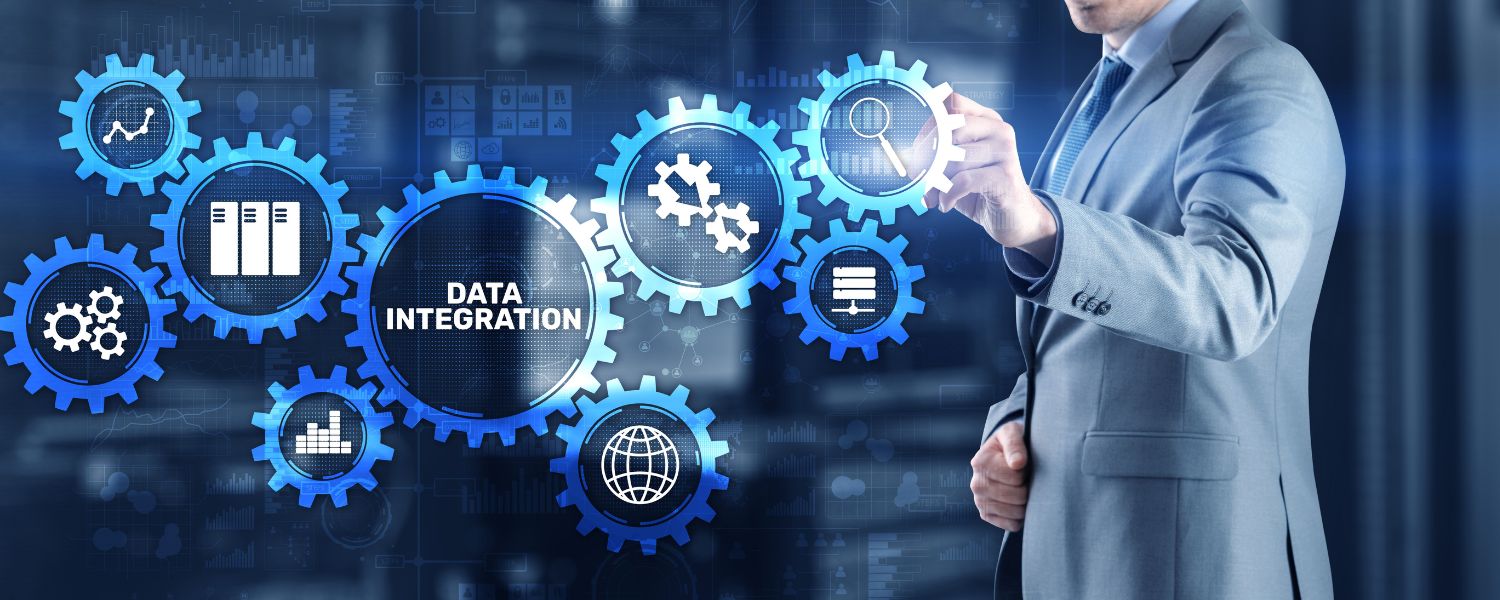
Businesses are increasingly adopting subscription-based models to offer their products and services. As the provision of subscription servicescontinues to surge, the need for efficient subscription management and billing processes becomes paramount. Here, we delve into the intricacies of SaaS billing engines, exploring their key features, importance, types of billing models, integration capabilities, benefits, challenges, trends, future developments, security considerations, scalability, and regulatory compliance.
1. Overview of SaaS Billing Engines
SaaS billing engines are sophisticated software solutions designed to automate and streamline the subscription billing process. They serve as the backbone of subscription-based businesses, facilitating the creation, management, and invoicing of subscriptions while ensuring accurate and timely revenue recognition. At the core of a SaaS billing engine lies a robust billing engine that handles the complexities of subscription billing, including recurring billing cycles, pricing plans, metered usage, and invoicing.
2. Key Features of SaaS Billing Engines
Leading SaaS billing engines boast a plethora of features tailored to meet the diverse needs of subscription businesses. These include:
Automated Billing: SaaS billing engines automate recurring billing cycles, reducing manual errors and saving valuable time for finance teams. They generate invoices automatically based on predefined billing schedules, ensuring timely and accurate billing.
Flexible Pricing Models: Modern SaaS billing engines support various subscription models such as tiered pricing, usage-based billing, and metered billing. This flexibility allows businesses to experiment with different pricing strategies and adapt to changing market demands.
Subscription Management: SaaS billing engines offer robust subscription management capabilities, allowing businesses to easily onboard customers, manage subscriptions, and handle upgrades or downgrades. They provide self-service portals where customers can view and manage their subscriptions, enhancing customer satisfaction.
Invoicing and Payment Processing: Efficient invoicing and payment processing are crucial for subscription businesses. SaaS billing engines automate the generation and delivery of invoices, as well as the processing of payments through integrated payment gateways. They also handle dunning management to follow up on failed payments and minimize churn.
Analytics and Reporting: Advanced analytics and reporting tools provide valuable insights into subscription metrics, churn rates, and revenue forecasting. SaaS billing engines offer customizable dashboards and reports that enable finance teams to monitor key performance indicators (KPIs) and make data-driven decisions.
3. Importance of SaaS Billing Engines
SaaS billing engines play a pivotal role in the success of subscription businesses by:
Improving Operational Efficiency: By automating billing processes, SaaS billing engines streamline operations, reduce administrative overhead, and enhance productivity. Finance teams can focus on strategic tasks rather than manual billing tasks, leading to greater efficiency.
Enhancing Customer Experience: Seamless billing experiences, accurate invoicing, and transparent pricing contribute to higher customer satisfaction and retention rates. SaaS billing engines enable businesses to deliver a frictionless billing experience that fosters customer loyalty and advocacy.
Facilitating Growth: Scalable billing solutions enable businesses to scale their operations efficiently, supporting growth without compromising on performance or reliability. As businesses acquire new customers and expand their product offerings, SaaS billing engines can seamlessly accommodate increased transaction volumes and complexity.
4. Types of Billing Models
SaaS billing engines support a variety of billing models, each suited to different business needs and pricing strategies:
Recurring Billing: The most common billing model for subscription businesses, recurring billing charges customers on a regular basis (e.g., monthly or annually) for access to the service. Customers typically subscribe to a plan with a fixed price and billing frequency.
Usage-Based Billing: Usage-based billing charges customers based on their usage or consumption of the service, such as the number of users, transactions, or data storage. This model is common in SaaS applications that offer variable usage levels or pay-as-you-go pricing.
Tiered Pricing: Tiered pricing offers different pricing tiers with varying features and capabilities to cater to diverse customer needs. Customers can choose a plan that aligns with their requirements and budget, with higher-tier plans offering additional value-added features.
Metered Billing: Metered billing charges customers based on specific usage metrics, such as the number of API calls, messages sent, or compute resources consumed. This model is popular in SaaS platforms that offer APIs or infrastructure services where usage can vary significantly.
5. Integration of SaaS Billing Engines
Integration capabilities are crucial for SaaS billing engines to seamlessly integrate with other systems and platforms across the organization. Key integrations include:
Payment Gateways: Integration with payment gateways like Stripe, PayPal, or Braintree enables secure payment processing and supports various payment methods such as credit cards, ACH transfers, and digital wallets.
CRM and ERP Systems: Integration with customer relationship management (CRM) and enterprise resource planning (ERP) systems allows for seamless data synchronization and workflow automation. Customer data, subscription details, and billing information can be synchronized in real-time between systems.
Accounting Software: Integration with accounting software such as QuickBooks or Xero facilitates accurate financial reporting and reconciliation. Invoices, payments, and revenue data can be automatically synced with the accounting system, eliminating manual data entry and reconciliation errors.
Analytics Tools: Integration with analytics tools like Google Analytics or Mixpanel provides valuable insights into customer behavior and subscription performance. Finance teams can track key metrics such as churn rate, customer lifetime value, and revenue growth to optimize pricing and retention strategies.
6. Benefits of Using a SaaS Billing Engine
The adoption of SaaS billing engines offers numerous benefits to subscription businesses, including:
Increased Revenue: By streamlining billing processes and reducing churn, SaaS billing engines help maximize subscription revenue potential. Automated billing and dunning management minimize revenue leakage and ensure timely payment collection.
Improved Cash Flow: Timely and accurate invoicing, coupled with efficient payment processing, ensures steady cash flow for businesses. SaaS billing engines provide visibility into outstanding invoices and payment status, enabling proactive cash flow management.
Enhanced Customer Satisfaction: Transparent pricing, flexible billing options, and seamless billing experiences contribute to higher customer satisfaction and retention. Self-service portals empower customers to manage their subscriptions and billing preferences, reducing support overhead.
Scalability: Scalable billing solutions accommodate business growth and expansion without compromising performance or reliability. As businesses acquire new customers and scale their operations, SaaS billing engines can seamlessly handle increased transaction volumes and complexity.
7. Challenges in Implementing SaaS Billing Systems
Despite their numerous benefits, implementing SaaS billing systems can pose several challenges for businesses, including:
Integration Complexity: Integrating with existing systems and platforms can be complex and time-consuming, requiring careful planning and coordination. Businesses must ensure seamless data flow between billing systems, CRM/ERP systems, and accounting software to avoid data silos and inconsistencies.
Regulatory Compliance: Compliance with regulatory requirements such as GDPR, PCI DSS, or SOC 2 may pose challenges for businesses, necessitating robust security and data protection measures. SaaS billing systems must adhere to strict data privacy and security standards to protect sensitive customer information and ensure regulatory compliance.
Customization Requirements: Meeting the unique needs and preferences of different businesses may require extensive customization of SaaS billing systems. Businesses must work closely with vendors to configure billing rules, pricing plans, and invoicing templates to align with their specific requirements and branding.
8. Trends in SaaS Billing Technology
The SaaS billing landscape is constantly evolving, with several notable trends shaping the future of billing technology:
AI and Machine Learning: The integration of AI and machine learning capabilities enables predictive analytics, dynamic pricing optimization, and personalized billing experiences. SaaS billing engines leverage machine learning algorithms to analyze customer behavior, detect usage patterns, and identify upsell/cross-sell opportunities.
Blockchain Technology: Blockchain-based solutions offer enhanced security, transparency, and immutability, making them ideal for secure and tamper-proof billing transactions. SaaS billing platforms leverage blockchain technology to create transparent audit trails, verify transaction authenticity, and prevent fraud.
Subscription Economy: The rise of the subscription economy continues to fuel demand for innovative billing solutions that cater to the unique needs of subscription businesses. SaaS billing engines evolve to support new subscription models, pricing strategies, and monetization methods to capitalize on the growing subscription market.
9. Future Developments in SaaS Billing Solutions
Looking ahead, the future of SaaS billing solutions holds exciting possibilities for businesses:
Seamless Integration: Continued advancements in integration technologies will enable seamless integration with a wide range of systems and platforms, further enhancing interoperability and connectivity. Businesses will benefit from plug-and-play integrations that streamline data flow and enable real-time synchronization.
Enhanced Personalization: SaaS billing engines will leverage AI and machine learning algorithms to deliver highly personalized billing experiences tailored to individual customer preferences and behaviors. Businesses will offer personalized pricing plans, discounts, and promotions based on customer segmentation and predictive analytics.
Regulatory Compliance: Ongoing efforts to strengthen regulatory compliance standards will drive the development of robust security and compliance features in SaaS billing solutions. Vendors will invest in data encryption, access controls, and audit trails to ensure compliance with GDPR, PCI DSS, and other regulatory requirements.
10. Security Considerations in SaaS Billing Systems
Security is a paramount concern for SaaS billing systems, given the sensitive nature of financial data involved. Key security considerations include:
Data Encryption: Utilizing strong encryption algorithms to secure sensitive data during transmission and storage. SaaS billing systems employ encryption protocols such as SSL/TLS to encrypt data in transit and AES encryption to encrypt data at rest.
Access Control: Implementing robust access control mechanisms to restrict unauthorized access to billing systems and data. Role-based access control (RBAC) ensures that only authorized users have access to sensitive billing information and administrative functions.
Compliance Standards: Adhering to industry-specific compliance standards such as PCI DSS, GDPR, and SOC 2 to ensure data security and regulatory compliance. SaaS billing systems undergo regular security audits and compliance assessments to verify adherence to industry best practices and regulatory requirements.
11. Scalability in SaaS Billing Infrastructure
Scalability is essential for SaaS billing infrastructure to accommodate growing business needs and increasing transaction volumes. Key considerations include:
Elastic Infrastructure: Leveraging cloud-based infrastructure and scalable resources to dynamically adjust capacity based on demand. SaaS billing systems utilize auto-scaling mechanisms to provision additional resources during peak usage periods and scale down during off-peak periods to optimize costs.
Horizontal Scaling: Distributing workload across multiple servers or instances to handle increased traffic and workload efficiently. Load balancers distribute incoming requests across multiple servers to prevent bottlenecks and ensure high availability and performance.
Performance Optimization: Continuous performance monitoring and optimization to identify bottlenecks and enhance system scalability. SaaS billing systems employ caching mechanisms, database optimization techniques, and content delivery networks (CDNs) to improve response times and reduce latency.
12. Regulatory Compliance for SaaS Billing Platforms
Ensuring regulatory compliance is critical for SaaS billing platforms to maintain trust and credibility among customers. Key compliance requirements include:
GDPR Compliance: Protecting customer data and ensuring compliance with the General Data Protection Regulation (GDPR) requirements regarding data privacy and security. SaaS billing platforms implement data protection measures such as encryption, pseudonymization, and data access controls to safeguard personal data.
PCI DSS Compliance: Safeguarding payment card data and adhering to the Payment Card Industry Data Security Standard (PCI DSS) requirements for secure payment processing. SaaS billing platforms undergo regular PCI DSS assessments and audits to ensure compliance with security requirements such as encryption, access controls, and vulnerability management.
SOC 2 Compliance: Demonstrating adherence to the Service Organization Control (SOC 2) framework for security, availability, processing integrity, confidentiality, and privacy. SaaS billing platforms undergo SOC 2 audits conducted by independent third-party auditors to assess compliance with security, availability, and confidentiality controls.
Conclusion
In conclusion, SaaS billing engines play a pivotal role in streamlining subscription management and billing processes for businesses operating in the digital economy. By leveraging advanced features, integration capabilities, and robust security measures, SaaS billing engines enable businesses to maximize revenue potential, enhance operational efficiency, and deliver superior customer experiences. As the subscription economy continues to thrive, investing in a reliable SaaS billing solution is essential for staying competitive and driving sustainable growth.
About Us
Billsby is a sector-leading Saas Billing Engine, helping businesses manage the issuing of invoices and the collection of recurring payments, whilst providing award-winning customer service support. Recently ranked by G2 as the Number 1 SaaS billing engine across 17 categories in its Spring 2024 awards,, Billsby streamlines billing operations, offers flexible subscription management, integrates with various systems, and provides real-time analytics, enhancing efficiency and scalability. Billsby provides the simplest and easiest solution for businesses choosing to adopt a subscription billing model, helping them to maximize their subscription revenue potential. For more in-depth guidance and bespoke solutions, visit www.billsby.com today.












